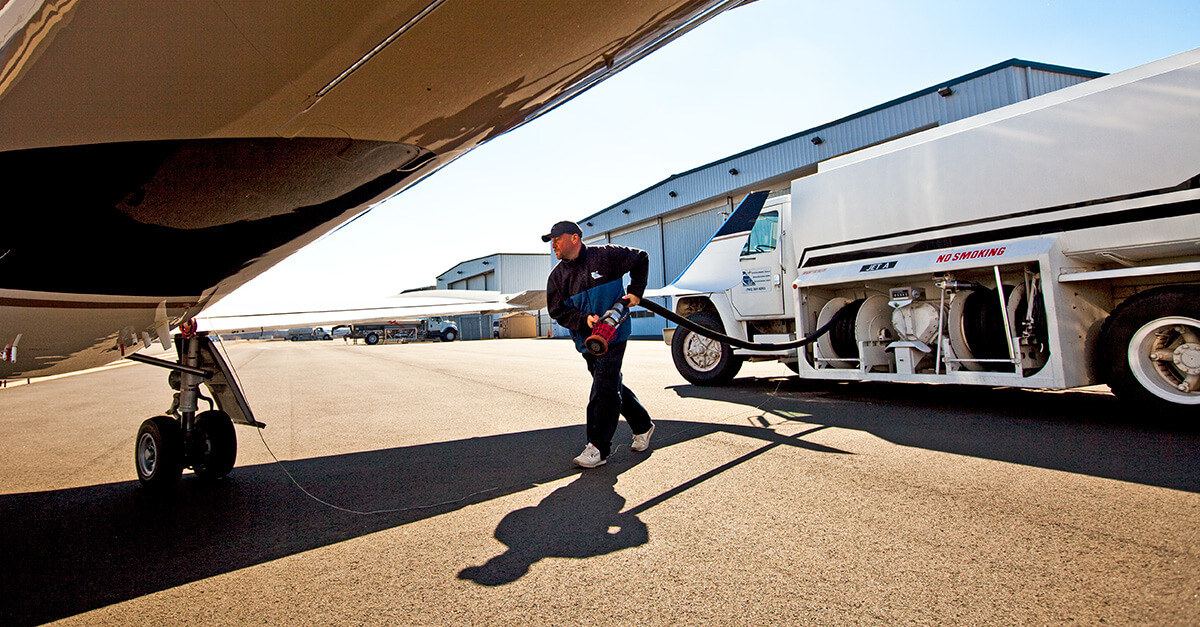
Jan. 28, 2020
In response to the increased presence of diesel exhaust fluid (DEF) at airports, operators and FBOs are urged to implement best practices for the safe handling of DEF, which has been linked to several incidents of severe jet fuel contamination in recent years.
From 2017-2019, there were three separate identified DEF contamination events affecting 14 business aircraft, three of which led to in-flight engine failure. All affected aircraft landed safely thanks to the quick reactions of well-trained flight crews, but the danger proved significant enough to prompt an NTSB safety alert in July 2019.
“The issue that’s happened is airport personnel mistakenly added DEF into the fuel system icing inhibitor (FSII) reservoir on refueling trucks,” said Steven Zabarnick, Ph.D., head of the University of Dayton Research Institute’s Fuels and Combustion Division.
“When that happens, the DEF is injected into the jet fuel instead of the FSII, where it rapidly reacts with the normal alkanes in the jet fuel,” he said. “This creates a clunky white deposit, which can foul the aircraft fuel tank and engine fuel system, and block filters, valves and nozzles.”
Working with the FAA, Zabarnick’s team identified DEF as the cause of the initial fuel contamination event at Omaha’s Eppley Airfield (OMA) in 2017, and confirmed 2018 and 2019 events at Punta Gorda Airport (PGD) and Miami-Opa Locka Executive Airport (OPF).
According to NBAA’s Senior Manager, Safety and Flight Operations Mark Larsen, an instigating factor for the rise of DEF contamination incidents is the increased use of Selective Catalytic Reduction systems to meet Environmental Protection Agency (EPA) emission standards for heavy vehicles.
“Diesel-powered fuel trucks, tractors, ground power units and other ground handling equipment – many of these now have DEF tanks on them,” he said. “What we saw in the Omaha incident is that a line service technician mistook the 55-gallon drum with DEF for FSII, both of which are colorless liquids.”
Larsen is part of an industry task force working with FAA and EPA to push for an emissions exemption to reduce the presence of DEF at airports before more contamination incidents can occur.
“When you consider the number of refueling events each day the frequency of these contamination events is low, but the reality is that a DEF fuel contamination outcome could very well be catastrophic,” he said.
As more facilities (including many that have historically not needed to handle DEF) now keep the fluid around to meet emissions standards, Alex Gertsen, NBAA’s director, airports and ground infrastructure, said it’s critical to not only train employees on the risk of contamination, but also to create conditions where it’s nearly impossible to mix up the substances.
“Store DEF separately from FSII in clearly labeled containers, keep it under lock, and have a certain person be designated with the key to prevent someone from mistakenly grabbing the wrong chemical – this practice would require relying on an individual with proper training and awareness to gain access,” he advised. “The best practice is also not to order FSII and DEF in the same size drums, as visual differentiation between storage containers is also a strong preventative measure.”
Operators can bolster their mitigation of this hazard by remaining engaged with the fueling process of their aircraft and by learning the warning signs of DEF-related fuel contamination.
“There’s a lot that operators can learn from these past incidents,” Gertsen said, recommending several first-person accounts (see Related Links) about the warning signs pilots noticed in the incidents. “If pilots suspect fuel flow issues, they should react immediately and not delay returning to the airport or proceeding to the closest location where the aircraft can land safely.”


 International Business Aviation Council Ltd.
International Business Aviation Council Ltd.